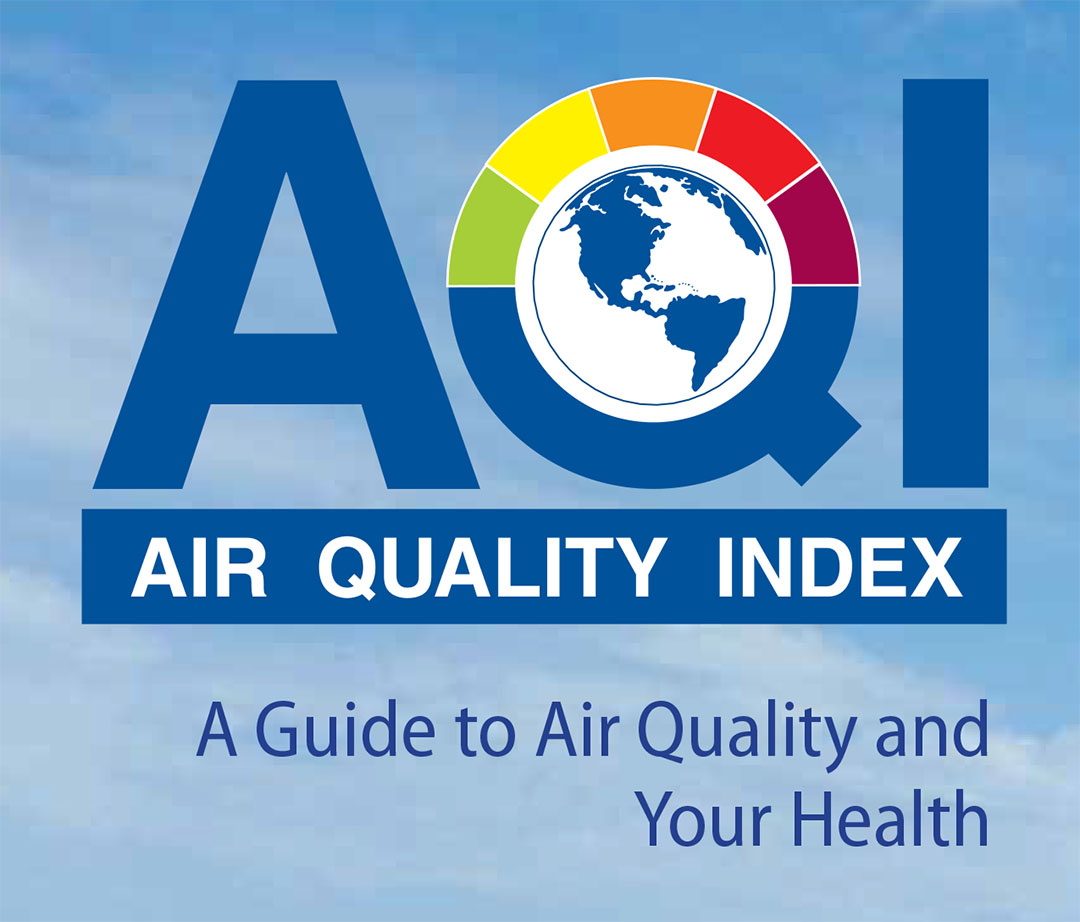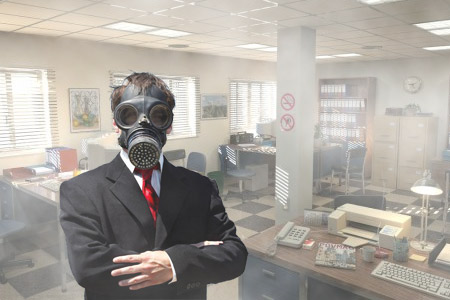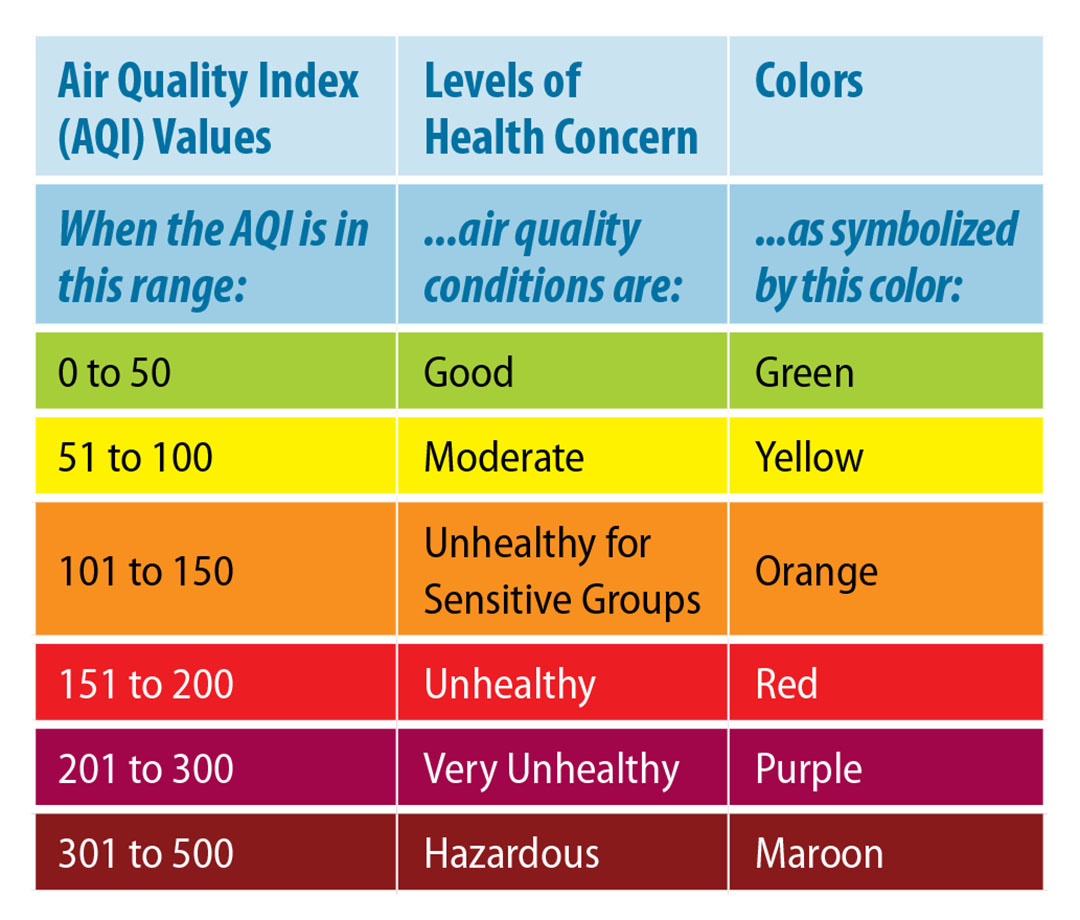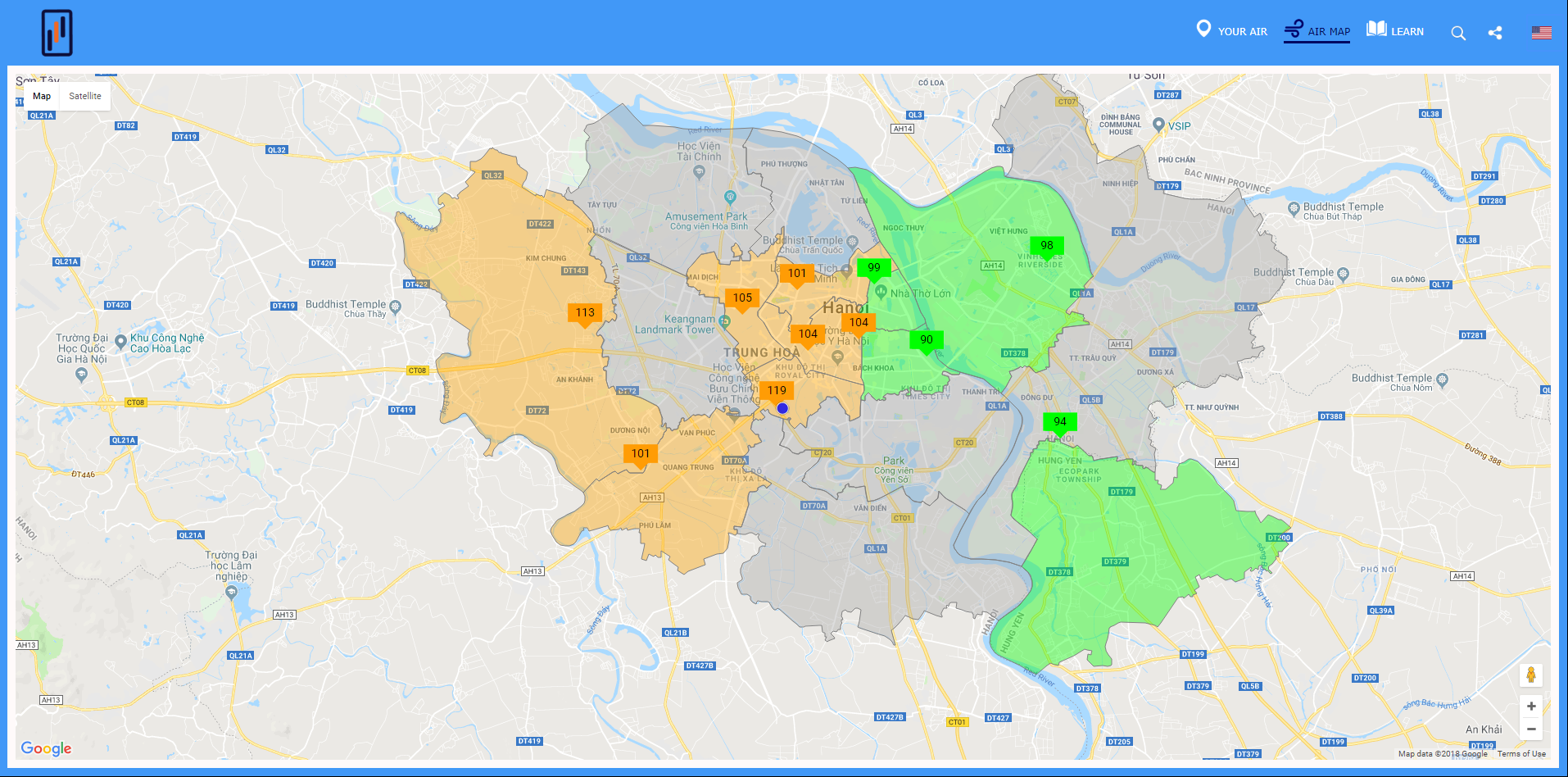
UNDERSTANDING YOUR AIR
? Where can I can find the AQI
? How can I avoid being exposed to unhealthy air
Why is clean air important?
Local air quality affects how you live and breathe. Like the weather, it can change from day to day or even hour to hour. The U.S. Environmental Protection Agency (EPA) and your local air quality agency have been working to make information about outdoor air quality as easy to find and understand as weather forecasts. A key tool in this effort is the Air Quality Index, or AQI. EPA and local officials use the AQI to provide simple information about your local air quality, how unhealthy air may affect you, and how you can protect your health.

What is the AQI?
The AQI is an index for reporting daily air quality. It tells you how clean or unhealthy your air is, and what associ-ated health effects might be a concern. The AQI focuses on health effects you may experience within a few hours or days after breathing unhealthy air. The AQI is calculated for four major air pollutants regulated by the Clean Air Act: ground-level ozone, particle pollution, carbon monoxide, and sulfur dioxide. For each of these pollutants, EPA has established national air quality standards to protect public health.
EPA is currently reviewing the national air quality standard for nitrogen dioxide. If the standard is revised, the AQI will be revised as well.
How does the AQI work?
Think of the AQI as a yardstick that runs from 0 to 500. The higher the AQI value, the greater the level of air pol-lution and the greater the health concern. For example, an AQI value of 50 represents good air quality with little or no potential to affect public health, while an AQI value over 300 represents air quality so hazardous that everyone may experience serious effects.
An AQI value of 100 generally corresponds to the national air quality standard for the pollutant, which is the level EPA has set to protect public health. AQI values at or below 100 are generally thought of as satisfactory. When AQI values are above 100, air quality is considered to be unhealthy—at first for certain sensitive groups of people, then for everyone as AQI values increase.

What do the AQI values mean?
The purpose of the AQI is to help you understand what local air quality means to your health. To make it easier to under-stand, the AQI is divided into six levels of health concern.
Each category corresponds to a different level of health concern:
Good. The AQI value for your community is between 0 and 50. Air quality is satisfactory and poses little or no health risk.
Moderate. The AQI is between 51 and 100. Air quality is acceptable; however, pollution in this range may pose a moderate health concern for a very small number of indi-viduals. People who are unusually sensitive to ozone or particle pollution may experience respiratory symptoms.
Unhealthy for Sensitive Groups. When AQI values are between 101 and 150, members of sensitive groups may experience health effects, but the general public is unlikely to be affected.
- Ozone: People with lung disease, children, older adults, and people who are active outdoors are considered sensitive and therefore at greater risk.
- Particle pollution: People with heart or lung disease, older adults,1 and children are considered sensitive and therefore at greater risk.
Unhealthy. Everyone may begin to experience health effects when AQI values are between 151 and 200. Members of sensitive groups may experience more serious health effects.
Very Unhealthy. AQI values between 201 and 300 trigger a health alert, meaning everyone may experience more serious health effects.
Hazardous. AQI values over 300 trigger health warnings of emergency conditions. The entire population is even more likely to be affected by serious health effects.

Where can I can find the AQI?
You can find the latest AQI values of your own location on AQI.vn. This website is the first and only Air quality data platform which available in Vietnam. Most people in Hanoi, Ho Chi Minh City and Danang can find an available data closed to them. AQI.vn is developing by PURITRAK from March 2018. The coverage is expanding day by day. The data is live and available for public.
How can I avoid being exposed to unhealthy air?
You can take simple steps to reduce your exposure to unhealthy air. First, you need to find out whether AQI levels are a concern in your area. You can do this, as described previously, by visiting the AQI.vn Web site. If the AQI for particle pollution is a concern in your area, you can learn what steps to take to protect your health by checking the charts on the following pages. Two important terms you will need to understand are:
- Prolonged exertion. This means any outdoor activity that you’ll be doing intermittently for several hours and that makes you breathe slightly harder than normal. A good example of this is working in the yard for part of a day. When air quality is unhealthy, you can protect your health by reducing how much time you spend on this type of activity.
- Heavy exertion. This means intense outdoor activities that cause you to breathe hard. When air quality
is unhealthy, you can protect your health by reducing how much time you spend on this type of activity, or by substituting a less intense activity—for example, go for a walk instead of a jog. Be sure to reduce your activity level if you experience any unusual coughing, chest discom-fort, wheezing, breathing difficulty, or unusual fatigue.

What is particle pollution?
Particle pollution (also known as “particulate matter”) con-sists of a mixture of solids and liquid droplets. Some particles are emitted directly; others form when pollutants emitted by various sources react in the atmosphere. Particle pollu-tion levels can be very unhealthy and even hazardous during events such as forest fires. Particle levels can be elevated indoors, especially when outdoor particle levels are high.
Particles come in a wide range of sizes. Those less than 10 micrometers in diameter (smaller than the width of a single human hair) are so small that they can get into the lungs, where they can cause serious health problems.
- Fine particles. The smallest particles (those 2.5 micrometers or less in diameter) are called “fine” particles. These particles are so small they can be detected only with an electron microscope. Major sources of fine particles include motor vehicles, power plants, residential wood burning, forest fires, agricultural burning, some industrial processes, and other combustion processes.
- Coarse particles. Particles between 2.5 and 10 microm-eters in diameter are referred to as “coarse.” Sources of coarse particles include crushing or grinding operations, and dust stirred up by vehicles traveling on roads.
What are the health effects and who is most at risk?
Particles smaller than 10 micrometers in diameter can cause or aggravate a number of health problems and have been linked with illnesses and deaths from heart or lung disease. These effects have been associated with both short-term exposures (usually over 24 hours, but possibly as short as one hour) and long-term exposures (years).
Sensitive groups for particle pollution include people with heart or lung disease (including heart failure and coronary artery disease, or asthma and chronic obstructive pulmonary disease), older adults (who may have diagnosed heart or lung disease), and children. The risk of heart attacks, and thus the risk from particle pollution, may begin as early as the mid-40s for men and mid-50s for women.
- When exposed to particle pollution, people with heart or lung diseases and older adults are more likely to visit emergency rooms, be admitted to hospitals, or in some cases, even die.
- Exposure to particle pollution may cause people with heart disease to experience chest pain, palpitations, shortness of breath, and fatigue. Particle pollution has also been associated with cardiac arrhythmias and heart attacks.
- When exposed to high levels of particle pollution, people with existing lung disease may not be able to breathe as deeply or vigorously as they normally would. They may experience symptoms such as coughing and shortness of breath. Healthy people also may experience these effects, although they are unlikely to experience more serious effects.
- Particle pollution also can increase susceptibility to respi-ratory infections and can aggravate existing respiratory diseases, such as asthma and chronic bronchitis, causing more use of medication and more doctor visits.
How can I protect my health at different AQI values?
